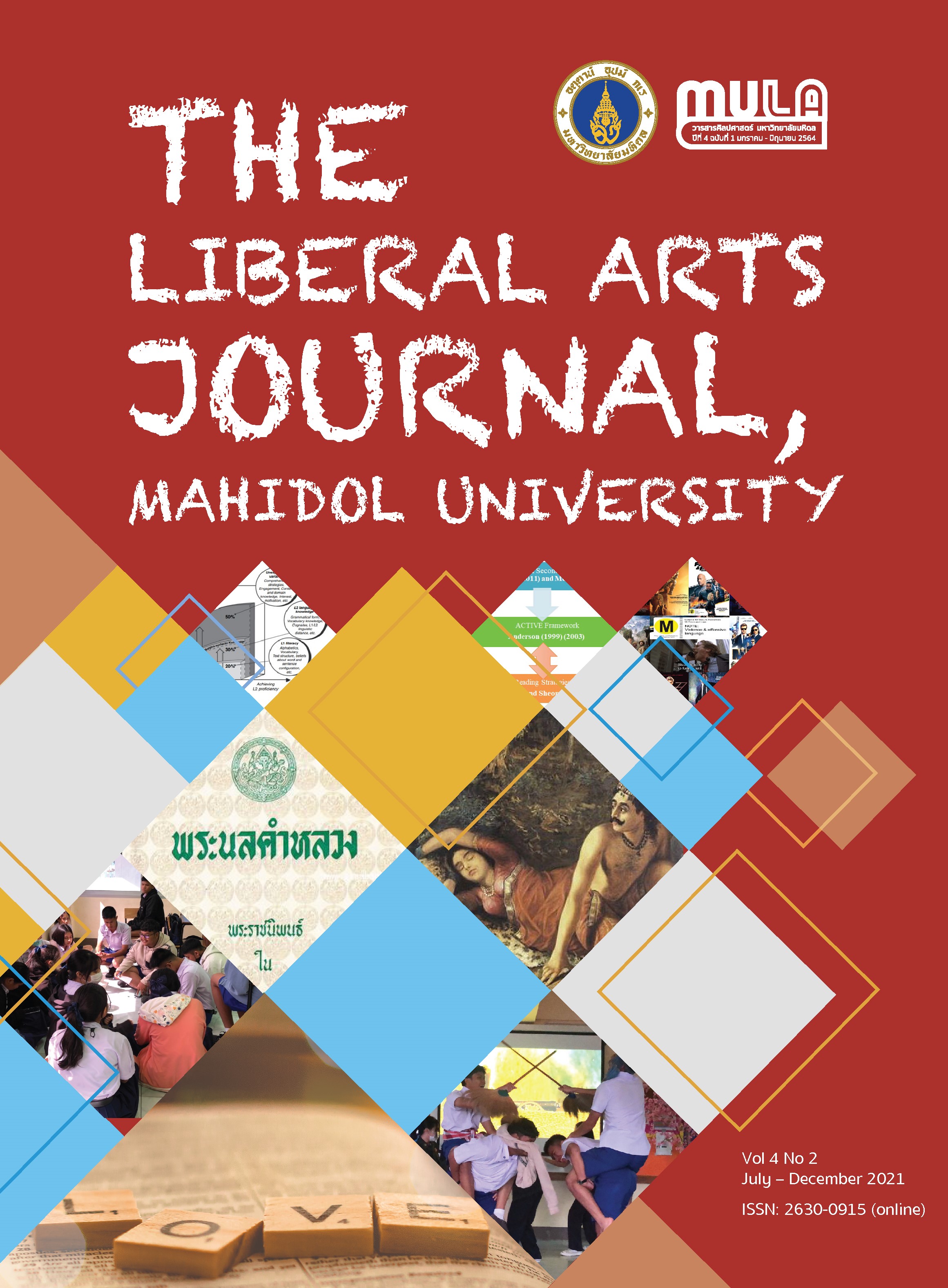กลวิธีการแปลคำต้องห้ามจากภาษาอังกฤษ เป็นภาษาไทยเพื่อผลิตบทบรรยายภาพยนตร์
คำสำคัญ:
กลวิธีการแปล, ภาษาศาสตร์การแปล, คำต้องห้าม, คำหยาบ, บทบรรยายภาพยนตร์บทคัดย่อ
งานวิจัยนี้มีจุดมุ่งหมายเพื่อวิเคราะห์และนำเสนอกลวิธีการแปลคำต้องห้ามในบทบรรยายภาพยนตร์จากภาษาอังกฤษเป็นภาษาไทย ที่นักแปลมืออาชีพนิยมใช้ โดยการเก็บข้อมูลจากกลุ่มตัวอย่างคำต้องห้ามในคู่แปล บทบรรยายของภาพยนตร์ภาษาอังกฤษและภาษาไทย ที่ติดอันดับยอดนิยมสูงสุด 20 อันดับแรก Box Office ประจำปี พ.ศ. 2562 และวิเคราะห์ข้อมูลโดยแบ่งออกเป็น 2 ประเด็น ได้แก่ การวิเคราะห์กลวิธีการแปลคำต้องห้ามทั่วไป (global strategies) ตามทฤษฎีของ Newmark (1988) และ การวิเคราะห์กลวิธีการแปลคำต้องห้ามเฉพาะ (local strategies) ตามทฤษฎีของ Davoodi (2009) ผลการวิเคราะห์พบกลวิธีการแปลทั่วไปที่นักแปลเลือกใช้ทั้งหมด 6 กลวิธี เรียงจากความถี่มากที่สุดถึงน้อยที่สุด ได้แก่ การแปลสื่อความ (ร้อยละ 54) การแปลแบบเสรี (ร้อยละ 18) การไม่แปล (ร้อยละ 15) การแปลถอดความหมาย (ร้อยละ 8) การแปลตรงตัว (ร้อยละ 4) และการแปลแบบสำนวน (ร้อยละ 1) ตามลำดับ ส่วนการวิเคราะห์กลวิธีการแปลเฉพาะ พบทั้งหมด 5 กลวิธี ได้แก่ การเทียบคู่คำต้องห้าม (ร้อยละ 44.4) การใช้คำต้องห้ามแบบลดความรุนแรง (ร้อยละ 20.4) การลบคำต้องห้าม (ร้อยละ 14.8) การแปลงเป็นคำรื่นหู (ร้อยละ 13) และการแทนที่ด้วยคำอื่น (ร้อยละ 7.4) ตามลำดับ ผลการวิจัยสะท้อนว่า นักแปลส่วนใหญ่เห็นความสำคัญของการแปลคำต้องห้าม นักแปลจึงนิยมใช้กลวิธีเทียบคู่แปลภาษาไทยให้ใกล้เคียงกับภาษาอังกฤษ และคู่แปลนั้นสามารถใช้สื่อสารได้จริงในภาษาไทย กรณีที่นักแปลพบปัญหาคู่เทียบแปลคำต้องห้ามที่หยาบคายมาก นักแปลจะใช้วิธีการดัดแปลงคำต้องห้ามภาษาไทยให้สุภาพมากขึ้น



